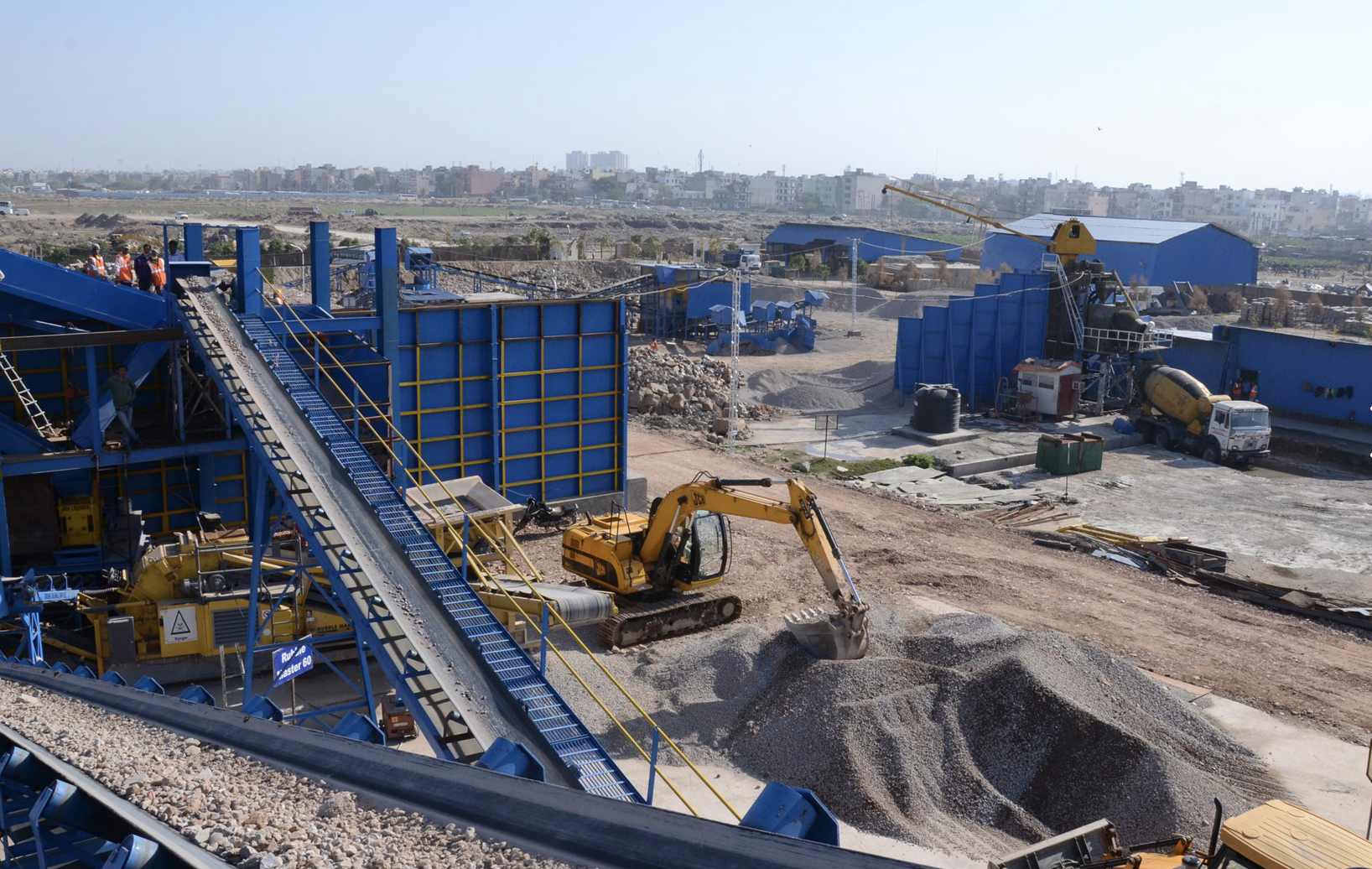
The second session on Day 2 of the CII’s Waste to Worth Conference focussed on ‘Sustainable Management of SCF/ RDF from MSW in Cement Kilns and WtE Plants. Moderated by Mr Ulhas Parlikar – Global Consultant – Waste Management, Circular Economy, Policy Advocacy, AFR & Co-processing, this session saw an interaction between WtE and cement industry representatives.
Mr Parlikar introduced the session by noting that there has been a lot of advancement in recent years in technologies to utilize Segregated Combustible Fraction (SCF) and Refuse Derived Fuel (RDF) as an energy source to replace fossil fuel use. “Efforts are underway to maximise a business model that is sustainable and follows a 3R approach. How can this help in containing the impact of climate change? A major chunk of the contribution needs to come from waste companies,” he said.
Here are some of the key points made by the panellists during the session:
- Mr DB SSR Shastry – Ramky Enviro Engineers Ltd.
“Ramky has been able to dispose RDF easily where cement plants are in close vicinity,” shared Mr Shastry before suggesting policy-level changes that can help the sector build capacities to dispose RDF in a sustainable manner. “There are many policy aberrations and complexities. For instance Uttarakhand has no cement plant and MSW disposal is challenge. Such issues need to be resolved by the CPCB and MOEFCC. There is also a lot of variation regarding power purchase agreements across Indian states. A national tariff policy should be implemented, similar to China, with Viability Gap Funding to help the WtE sector in India.”
- Mr Bashir Shirazi – COO, EverEnviro Resource Management Pvt. Ltd.
EverEnviro Resource Management Pvt Ltd operates the Ghazipur WtE plant, in addition to composting plants in Okhla, Jaipur, and Mysore. Currently, it manages 2000 tpd waste with SCF/RDF.
Mr Shirazi felt that consistency in waste quality being given to WtE plants by the concessionaires poses a major challenge. “Concessionaires should take responsibility for the quality of waste they supply since the risk is otherwise transferred to WtE plant operators. Our calorific requirements are such that if there is inconsistency in quality and quantity, we lose revenue and performance of output.”
Agreeing with Mr Shastry on the importance of proper segregation and recycling, Mr Shirazi said, “If we do not practice proper segregation, we spend a lot of resources in waste sorting at plants. Only if the material has good calorific value, it should find its way to cement plants or WtE plants. It’s time to stop comparing WtE plants with commercial coal-based power plants. State governments should compensate the differential tariff from DISCOMs,” Mr Shirazi concluded.
- Raju Goyal – CTO, Ultratech
Willingness to use RDF has increased in the last few years for the cement industry and ULBs are also supporting this process. The cement industry is also better equipped to handle RDF, compared to before. In fact, the cement industry is best placed to support the waste industry in its CE goals, Mr Goyal said. However, it should be remembered that cost economics play an important role since the cement industry is so cost-sensitive.
Currently, the Thermal Substitution Rate (TSR) in India’s cement industry is only 5-6 percent as compared to other countries where it is nearly 90 percent. “In the coming years, this will increase and some plants have already achieved 30 percent. But how can all cement plants do the same? A lot depends on geographical location of these plants. Additionally, economic and logistical barriers exist,” Mr Goyal said.
“From the perspective of the cement industry, our plants have unique requirements. For one, the quality of SCF impacts our decision on SCF/RDF quantities will be used. Poor quality material, inconsistency in quality and availability of the material are deterrents. To feed the material into our cement industry, WtE plants to need to pre-process it – be it sorting, sizing, shredding etc. This has to be done before feeding and investment needs to be made, which is not small by any means – almost 50-70 crores – if we have to generate sizeable amount of material. That’s where cement companies hesitate.
Long term supply, quality assurance and economic feasibility are the three defining factors in maximizing the use of RDF in the cement industry. Technical solutions are available to resolve all these concerns. Customization in terms of policy is also required since there is a wide range of players in the cement market.
- Mr Anirudh Dhani – Unit Head, J.K Cement
“RDF is the only material available to achieve TSR and eliminate fossil fuels in the cement industry. High moisture content, contaminants including high ash percentage and chloride content are among some of the challenges we need to address. Assured supply of good quality RDF is important along with other supply chain issues. Geographical dependency is a concern in order to make RDF use financially viable. Also policy intervention is important and policies must give greater confidence to co-processors that the govt supports them, rather than punish them,” according to Mr Dhani.
Pre-processing of RDF is an option to promote its use in the cement industry but the govt must bear the costs of this, Mr Dhani proposed.
- Mr Rajpal Jangra – Head of Design & Engineering, Averda
Highlighting the demand-supply gap in RDF production and consumption, Mr Jangra mentioned that transportation and infrastructure gaps exist in the Indian cement industry. “Technological challenges also exist for both WtE and cement industry. Older WtE plants were designed for low calorific value waste (1200 Kcal). Gradually, quality of waste is improving as are the WtE plants. However, waste quality still remains a concern for WtE plants. It will take time for the issue to be sorted. Gate fees might help towards this. Another policy change addressing leachate treatment cost and sanitary landfill cost will have to be introduced to make RDF more viable for cement industry.”



